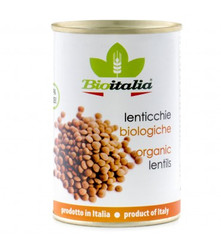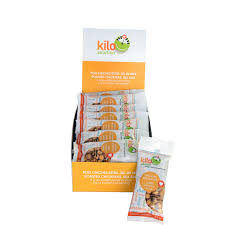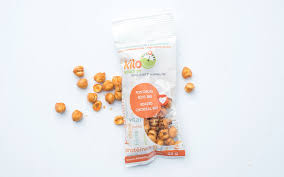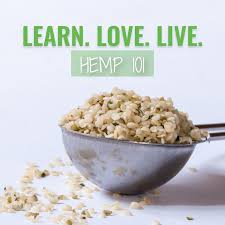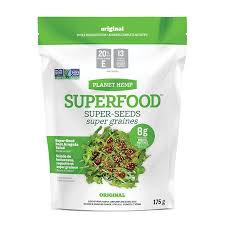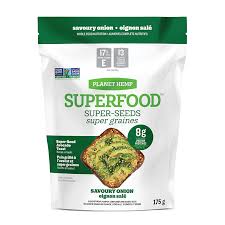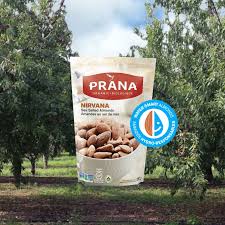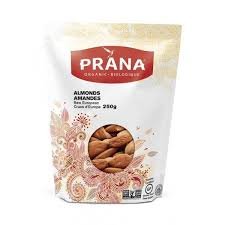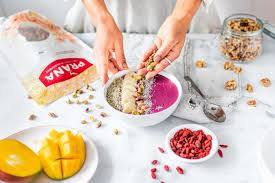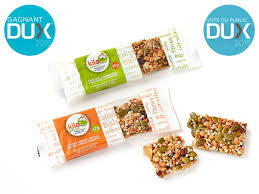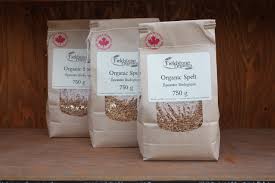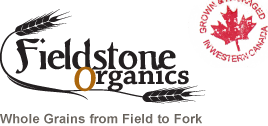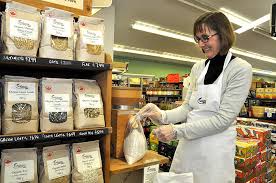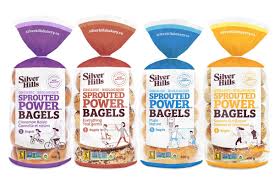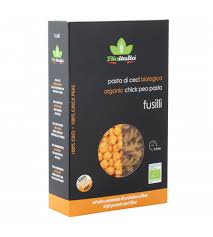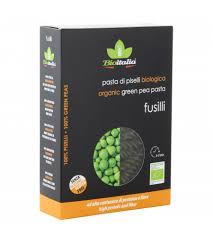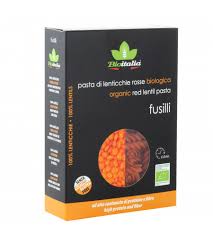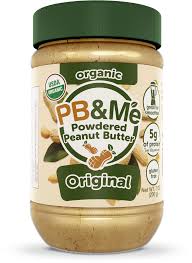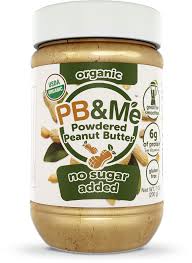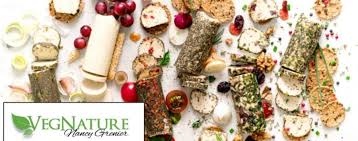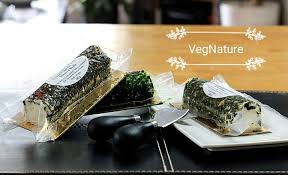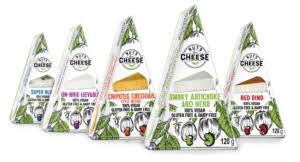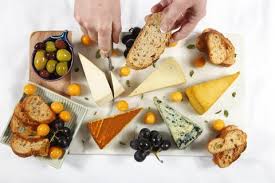
The new Canada Food Guide also encourages us to adopt a more plant-based diet. While in the past few years more and more meat eaters have adopted or converted to a vegan or vegetarian diet, this is by no means the goal of this article. In fact, I appreciate my different sources of meat, but as you can see by what I talk about during my segments or in these posts, the quality, sustainability, environmental impact of my eating and living choices are extremely important to me. I am not here to preach about the unethical practices of the meat industry or their impact on our health as well as that of our environment and planet, or to suggest completely eliminating meat protein from our diets. This is an invitation to just take a moment to evaluate or reconsider the way we eat. Let’s just make more informed choices when it comes to selecting the foods we choose to nourish ourselves and our families with, animal proteins included, while making it a point to add more fruits, vegetables, whole and fermented grains, legumes and other plant sources of protein to the menu. Many plant-based foods not only are rich in proteins, but they also have the advantage of being higher in fiber, antioxidants, vitamins and minerals than animal proteins, and have a positive impact on our heart health, body weight and in the prevention of many different medical conditions.
Here is a list of some of my favorite whole, plant-based, protein-rich foods that are easy to incorporate into our diets. The foods listed below are not only healthful, some are also known to be complete, whole proteins which means they contain all 9 essential amino acids our bodies need, and have a higher protein content per serving than other plant proteins.
Legumes
When we think of a food that is a good source of protein but is not an animal protein, most of us think of legumes. Lentils, chickpeas, beans and peas are all great sources of protein, a rich source of fiber, an excellent source of B vitamins and also contain important minerals like iron, potassium, magnesium, zinc and calcium. They help decrease blood cholesterol and blood sugar levels, plus they contain prebiotics which stimulate the growth of probiotics in our gut aiding both digestion and our immunity!
You can buy your legumes dry or canned. The main difference is in the time it will take you to prepare your meal. I usually stick to buying different types of lentils (red, green, and brown) dry because you can simply throw them in a stew, soup, pot of boiling water for pasta or other whole grain, and they cook within 20-30 minutes! I have recently fallen in love with Fieldstone Organics. You know how I feel about eating a whole, real food diet and sourcing products that are local and grown in Canada, but that are also organic. Well this company is all of that! All their products (grains, legumes, seeds) are grown mostly in British Columbia and are all certified organic. They have a selection of lentils and peas and also make a wonderful Soup Mix which combines a variety of all their lentils and peas in one package! I’ll go into more details about this amazing company in the section about grains below.

I also have a great variety of canned legumes either to whip up a quick healthy meal or snack: tuna and lima bean salad, homemade hummus, pasta e fagioli, oven roasted chickpeas. They are already fully cooked which makes everything so much easier and fast; the only drawback is the sodium content. I love BioItalia canned beans because not only are they organic, they have an amazing selection to meet all your legume needs and their sodium content is not too high. Just drain and rinse them under cool water and you will decrease the sodium content by as much as 40%.
Foodful Life Tip
Adding just a handful or sprinkle of legumes to your salad as your sole source of protein for that meal won’t cut it. You need to get ideally ¾ of a cup of legumes per meal which yields roughly between 9 to 14 grams of proteins.
And if you are not yet used to legumes or cooking with them, and need to ease into them, these savory snack options are another great way to get these wholesome foods into our diet. Three Farmers has a great selection of flavored, dry roasted, 100% Canadian grown, non-genetically modified whole chickpeas, peas and lentils that are a healthy, high fiber and high protein snack option. They are not high in sodium like most savory snacks usually are and are minimally processed in a nut and peanut free facility making them a perfect whole food snack option for both us adults and our kids. My daughter is 2.5 years old and absolutely loves munching on these crunchy legumes! I also love using them as a crunchy protein-rich topping for my salads.
Another roasted chickpea snack option that I love is by a fellow Montreal dietitian and friend, Isabelle Huot. Her Kilo Solution snacks are not only tasty, but are available in individual servings making them a practical solution for a quick and healthy on-the-go snack.
Soy Products
When it comes to soy-based products, be wary. Just because something is labelled vegetarian or vegan doesn’t mean it is healthy! The faux-meat food section has exploded in the past few years and veggie burgers or vegan sausages or vegetarian everything are the big craze. Unfortunately, many of them are not nutritious or as healthy as you would think they should be. Read the labels and ingredient lists carefully. Many of these products are made with highly processed forms of soy like soy concentrates, textured soy or with soy that is genetically modified. When choosing any type of soy-based product you always want to avoid genetically modified soy. Soy is one of the most pesticide doused crops on the planet, so you will want to ideally buy products certified organic or non-genetically modified. You also want to limit your use of soy foods to products that are actually made using whole soybeans and don’t contain any unrecognizable and even harmful ingredients, fillers or additives. That being said, if you want to add tofu to your diet, a block of organic tofu can be a great meat substitute, just keep in mind that the extra firm tofu has slightly more protein per serving than soft or silken tofu. An even better option would be tempeh which is fermented whole soybeans, so it also has probiotic benefits.
I also enjoy edamame which is essentially the soybean that is harvested when the beans are still young and soft; they are green and have a slightly sweet flavor. You can buy edamame fresh or frozen, in their pods or shelled. I usually always have a bag or two of MacKellar Farms shelled edamame in my freezer which makes it much easier to toss them in a stir fry, grain bowl, soup, salad or even a smoothie! I choose MacKellar Farms edamame not only because they are Canadian grown (not imported from China as most are) non-genetically modified soybeans, but also because they use organic practices to grow their edamame, even if they are not yet certified organic.
Foodful Life Tip
Like other beans, edamame are part of the legume family, but they provide more protein than the others with as much as 10 grams per half a cup serving of shelled edamame. They also get bonus points in the legume family for being a complete protein (higher quality protein like animal protein) which means they have the 9 essential amino acids our body needs to function optimally.
Nuts and Seeds
We all know how nuts and seeds are plant foods and a very important part of a healthy diet. They provide a wide range of essential nutrients such as fiber, protein, heart healthy plant-based omega 3s, several B group vitamins and vitamin E, different minerals such as calcium, iron, zinc, potassium, magnesium, as well as antioxidant. Although the protein content of nuts and seeds varies from one to the other, and most are not considered a whole or complete protein, they are considered a good source of plant protein and each provide health benefits beyond that.
Foodful Life Tip
To maximize your protein intake these are the ones you’ll want to add more often to the menu: peanuts (although they are actually a legume and not a nut), almonds, Brazil nuts, cashews, hazelnuts, pine nuts, pistachios and walnuts. An ounce serving (roughly a handful or a ¼ cup) of peanuts or almonds contain about 7-8 grams of protein, whereas the other nuts provide about 4 grams. Some seeds like pumpkin and hemp seeds are an even better choice. One ounce of pumpkin seeds offer 11 grams of protein, that’s almost the same amount you get in 3 tablespoons of hemp hearts. You can eat your nuts and seeds ideally raw or dry roasted, and as a nut or seed butter, just make sure your butters are 100% natural and don’t contain any added sugar, salt or fat.
Plant proteins are usually not complete proteins, but just like soybeans hemp seeds are, and for this reason you should always have some on hand. I love using PlanetHemp’s organic hemp hearts to add a nutritional punch to pretty much anything I eat, cook or bake! It’s a whole plant-based food that is nutrient dense, is easy to digest and contains all the essential amino acids that we and our kids need!
If you have been following me for a while, you all know my love for all things Prana. They definitely meet all my high-protein nuts and seeds needs, plus offer a great variety of mixes too! They not only offer some of the best wholesome and organic ingredients and snacks that are preservative and sulfite-free, but they also take their social and environmental responsibility very seriously sourcing the best ingredients for not only us but the planet. An example of this is their “water-smart” almonds. Nuts in general are very water-intensive agricultures, it can take up to 12 liters of water to grow a single almond! Prana now offers only Spanish grown almonds for the simple reason that they mostly rely on rainfall for their growth, unlike Californian almonds that rely mostly on artificial irrigation and use up substantial water resources. Their Spanish partners also diversify the land they use which protects the soil health and they reduce waste by using the shells of the almonds that would normally go to waste and repurpose then into energy used to operate their farms. I am so very proud of this organic Montreal-based company that takes our health and the planet’s so incredibly serious!
Finally, Kilo Solution’s individual trail mixes and bars are a practical way to enjoy some of these nuts and seeds on the go! These plant-based snack bars offer 6 to 7 grams of protein each!
Grains
Whole, unprocessed grains are one of the cornerstones of a healthy diet and have a long list of health benefits. They provide fiber, vitamins, important minerals, antioxidants and protein, but not always as much as we would expect, especially when we choose refined grains. To get the most protein bang out of the grain products you consume focus more often on my suggestions below.
Whole Grains
Despite how widely popular and consumed grains may be, most of us don’t often eat them in their natural state, but rather after having undergone some sort of transformation. Yet a simple unprocessed kernel like wheat berries or oats is unbeatable when it comes to our taste buds and our health. Fieldstone Organics is a company that has understood this! Their focus is the whole grain versus a processed or transformed version of it with a special emphasis on ancient grains. Why is this a big deal? Because these grains are essentially the same grains we ate hundreds of years ago. They have a simpler genetic profile which hasn’t changed much over all those years and makes them more easily digested by our bodies. In fact, studies have shown that people who have severe sensitivities to modern wheat, don’t react the same to ancient wheat grains like Khorasan (also known as Kamut®). Furthermore, ancient grains like einkorn, emmer, farro, buckwheat, spelt, amaranth, millet, also tend to be higher in nutrients like fiber, protein, vitamins and minerals than conventional wheat. They will take a bit longer to cook, but you can use them the same way you would whole grain rice, you can sprout them, use them to make your own whole grain flour, eat them for breakfast in a yogurt parfait or as a hearty warm cereal bowl, as a side dish for dinner or to add texture to your salad or a hearty winter soup…the possibilities are delicious and endless! I always say we need to go back to the way we used to eat and do things, for the wellbeing of our health and our planet. That’s what this company is helping us do.
Sprouted Bread
I am completely obsessed with bread…actually my husband and daughter are exactly the same. So when it comes to buying commercial bread for the family, you can see me standing in the bread aisle and dissecting the ingredient list and nutritional value table. Luckily when I fell on Silver Hills Bakery a few years ago, I fell on the jackpot of breads and you’ll rarely find me anymore in the bread aisle analyzing labels! They have a simple ingredient list, are made from organic sprouted whole grains, a process that releases vital enzymes, increases their fiber and vitamin content (particularly folate), makes minerals like calcium and iron found in bread more easily absorbable, as well as boosts their protein content and makes them more easily digestible. If you are mildly sensitive to wheat products (not dealing with celiac disease), this may be the answer for you. Some of their products also contain seeds or ancient grains, and all of them have been certified as Glyphosate-Residue Free by a third party, which is something that is of concern to me when choosing grain products. Each slice of their bread products contains 4 to 5 grams of fiber and 6 to 7 grams of protein! Not only do they exceed my expectations as a registered dietitian, but it is the first bread company that has been unanimously family-approved, and my husband is pretty picky.
Legume Pasta
BioItalia is definitely my go to brand for canned organic legumes, but also for their organic pasta and when I discovered they also made organic pasta exclusively with legume flour I was extremely happy. Their legume pasta is available in three varieties: 100% chickpeas, 100% red lentils and 100% green peas. It’s not only a great choice for people who suffer from celiac disease or are following a gluten-free diet, but for those of us who are looking for pasta that has a higher nutritional content, namely more fiber and more protein. The chickpea pasta most closely resembles the taste and texture of regular wheat pasta, while the other two have a very mild lentil or pea flavor and a slightly softer texture. A great healthy choice the whole family will love, even the little ones thanks to their different shapes and colors.
Protein Supplements
I don’t typically use or recommend adding protein powders to our food; I prefer using whole, real foods and would just throw in a few tablespoons of my PlanetHemp hemp hearts or an one of my 100% natural and organic nut or seed butters to my recipes, smoothies, and chia or oat puddings to boost their protein content. Protein powders are often very processed, have a high sugar and sodium content to improve their taste or contain preservatives, filler and artificial flavors. Although, today there are many protein powder options available and some can definitely be a part of a healthy diet. Just make sure to look at the ingredient list and choose those that are made with a blend of plant-based protein sources. Skip those made with soy as these are very processed. A great solution is the powdered nut butters from PB&Me, another local Montreal company. An alternative to regular peanut or nut butters, they have slow roasted their nuts and pressed them to remove the oil, producing a light nut flour that is high in protein and contains 90% less fat than their traditional butter versions. Depending on which one you choose (peanut, almond, hazelnut, no sugar added, original or chocolate flavored) they have between 45 to 60 calories, 4 to 6 grams of protein and 0 to 3 grams of sugar per serving (2 tablespoons). You can rehydrate the nut powders with some water and use as a creamy spread, or as a protein boosting ingredient by adding some to our shakes, smoothies and recipes, which is my favorite way! They recently added a certified organic range of powdered peanut butters, their almond and hazelnut powdered butters are non-genetically modified, just not yet certified as such.
Nut-Based "Cheese"
Finally, but not least, the cheese lover in me had to try out vegan cheese and see what the fuss from vegan friends was about and if they even came close to the real thing. We know that isn’t an easy feat! So I researched a few dairy-free “cheeses” and right off the bat wasn’t very impressed by their ingredient list and nutritional value. For a food claiming to be a healthy, good for you replacement of real cheese, not only did most contain fillers, preservatives and didn’t come close to the nutrition benefits we get from eating cheese, for practically the same calories and fat per serving and with half the protein content! Granted the fat in cheese is mainly saturated and in most vegan type cheese it is not, but I wasn’t willing to compromise overall nutrition and taste for less saturated fats, it had to give me more. Well I fell on two Canadian companies that did. Both brands have an amazing clean ingredient list, which is so important in this category of foods as most brands are producing highly processed nut cheese, at which point I say just stick to the real thing or skip it altogether if you are following a dairy-free or vegan diet. Adding low quality foods and ingredients to our diets just because they are labelled as a plant-based or dairy-free or vegan or vegetarian is not automatically a good or healthy choice!
If you are looking for a good brand and tasty option, I have two I love and recommend, the Ontario brand Nuts For Cheese and the Quebec company VegNature. Both these brands offer a variety of spreadable, creamy and meltable “cheese”, VegNature even refers to their cheese as a plant-based goat-like cheese and I must agree. Actually, I find the texture of both brands reminds me more of goat or cream cheese type texture. Both are cashew based and 100% vegan, soy and dairy-free. The main difference is Nuts For Cheese is certified organic and uses coconut oil, and VegNature is 100% non-genetically modified and uses cacao butter instead of coconut oil because the founder’s daughter is allergic to coconut. They are one of the few, if not only brand of dairy-free cheese on the market to not be made with coconut oil, and I must say it makes this dairy-free cheese taste more like the real thing. I truly like both, and find that their different taste and shape together make for a beautiful and interesting addition to a conventional cheese platter! If you love cream cheese and would like a healthier option, these give you that similar creaminess and texture but less saturated fat, more protein, more potassium, as well as some fiber and iron which cream cheese doesn’t. So for these reasons I would definitely recommend these two brands.
#legumes #beans #chickpeas #lentils #soybeans #soyproducts #edamame #nuts #hempseeds #hemphearts #powderednutbutters #ancientgrains #sproutedgrains #wholegrains #wholefoods #legumepasta #dairyfreecheese #nutcheese #BioItalia #ThreeFarmers #KiloSolution #IsabelleHuot #PlanetHemp #PBMe #FieldstoneOrganics #SilverHillsBakery #VegNature #NutsForCheese #PranaSnacks #McKellarFarms




